Outsourcing quality assurance (QA) helps organizations improve software quality without overloading internal teams. By assigning software quality assurance testing services to experienced providers, companies can achieve better test coverage, faster bug detection, and a more focused approach to core development. With access to specialized skills and tools like test automation software, businesses can enhance both testing speed and accuracy.

According to the Deloitte Global Outsourcing Survey 2020, cost reduction remains the top objective, followed by flexibility and speed to market. These drivers align with QA outsourcing goals, where businesses aim to minimize expenses while ensuring faster delivery and adaptability to changing demands.
To understand the value of this model, it’s essential to assess the return on investment (ROI). This includes comparing total costs with benefits such as reduced production defects, improved release cycles, and higher user satisfaction. A proper return on investment analysis guides smarter QA decisions.
💡What’s Next? Keep reading to discover:
🚀 What quality assurance outsourcing is and how it impacts ROI
🚀 How outsourcing boosts efficiency, scalability, and product quality
🚀 Step-by-step guide to calculate returns from QA investments
🚀 Examples of companies improving delivery and performance through QA outsourcing
🚀 Common risks and how to choose the right QA partner to overcome them
Introduction to QA Outsourcing and ROI
QA outsourcing is the process of assigning software testing tasks to external providers. It helps businesses ensure product quality, speed up delivery, and reduce internal workload and costs. This approach is ideal for companies aiming for faster releases and optimized testing resources.
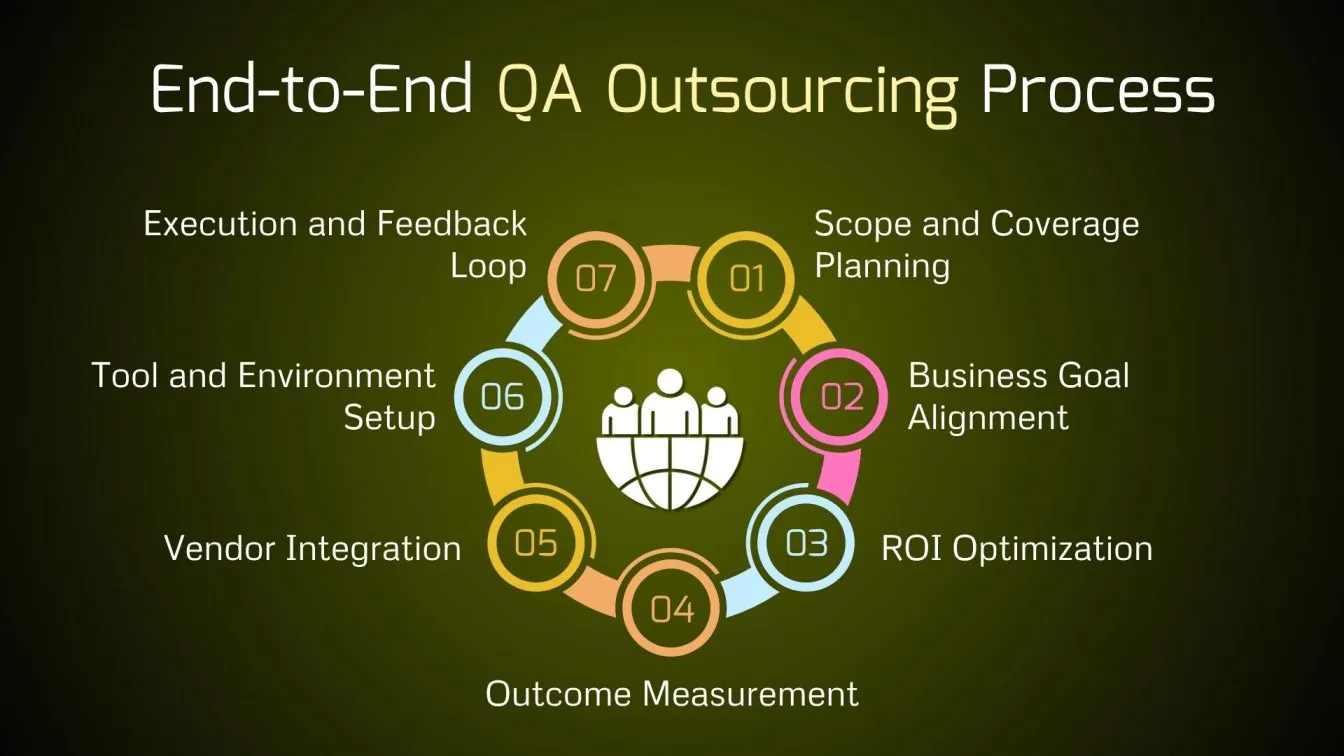
Between planning and delivery, QA outsourcing brings automation, faster bug detection, and scalable resources, improving efficiency and reducing costs.
ROI (Return on Investment) measures the value gained from outsourced QA against the cost incurred. When QA efforts align with business goals, organizations can achieve fewer defects, quicker releases, and better user satisfaction.
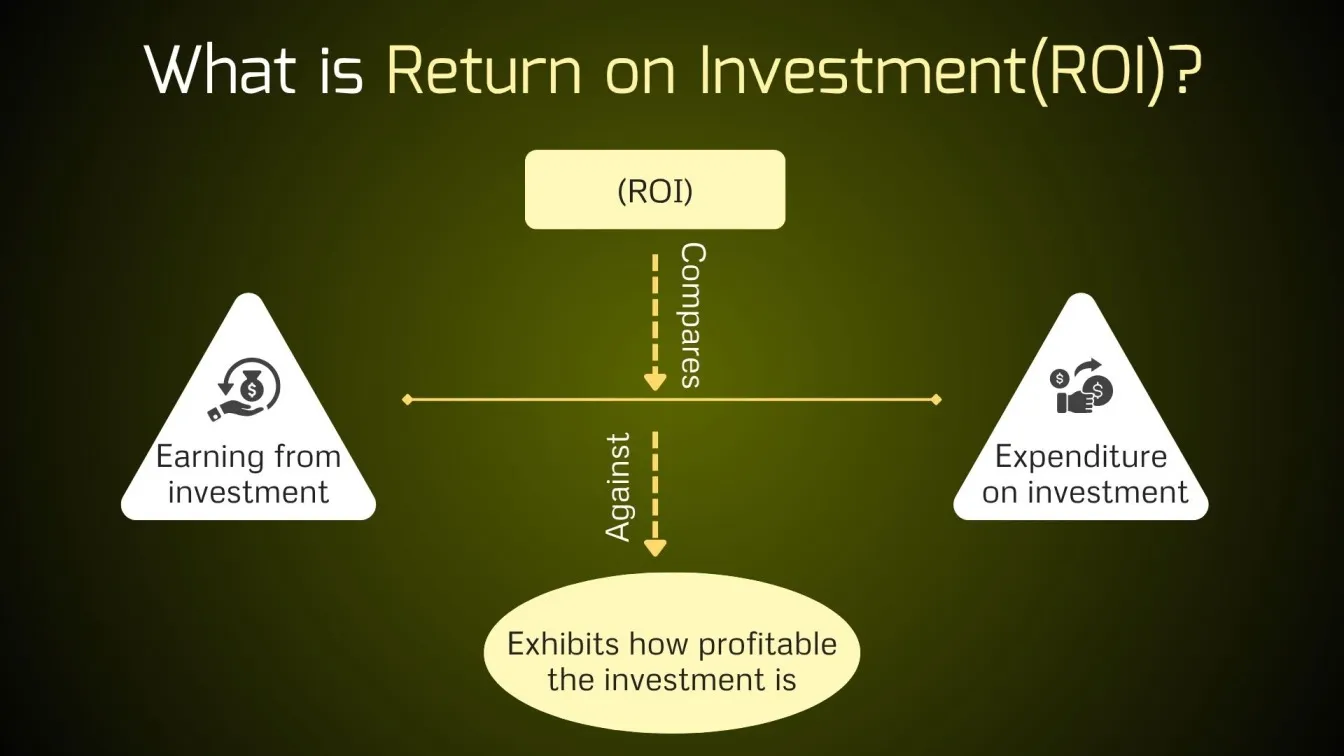
As QA efforts mature, the focus shifts from task completion to measurable impact. ROI becomes crucial to assess if investments in vendors, tools, and infrastructure are driving results like:
- Fewer production bugs
- Faster time-to-market
- Enhanced customer satisfaction
This shift signals a move from doing QA to measuring its value.
Benefits of QA Outsourcing
Outsourcing quality assurance allows businesses to improve software reliability while managing costs and accelerating delivery timelines. With access to expert software testing services and advanced tools, companies can achieve measurable improvements in quality and performance.

Key Benefits:
- Highest Return on Investment: QA outsourcing reduces overhead and improves testing efficiency, resulting in a stronger return on investment and a more effective use of QA budgets.
- Expertise in Quality Assurance Testing: Outsourced teams specialize in various software testing types, ensuring that both quality assurance and quality control standards are consistently met.
- Increased Test Coverage: External providers use structured strategies and code coverage tools to maximize test coverage across platforms, environments, and user scenarios.
- Advanced Test Automation Capabilities: Outsourcing gives access to modern test automation tools and frameworks, helping streamline repetitive tasks and speed up releases with efficient test automation services.
- Scalable and Flexible QA Resources: Businesses can scale software quality assurance efforts based on project demands without hiring or training new internal staff, ensuring the best return on investment for evolving needs.
How to Calculate ROI for QA Outsourcing?
Measuring the return on investment (ROI) from QA outsourcing involves evaluating the costs spent against the value gained from improved software testing and QA services. This section explains how to assess total investment, identify delivered value, compare fixed and variable spending, and apply a simple return on investment formula to calculate ROI accurately.
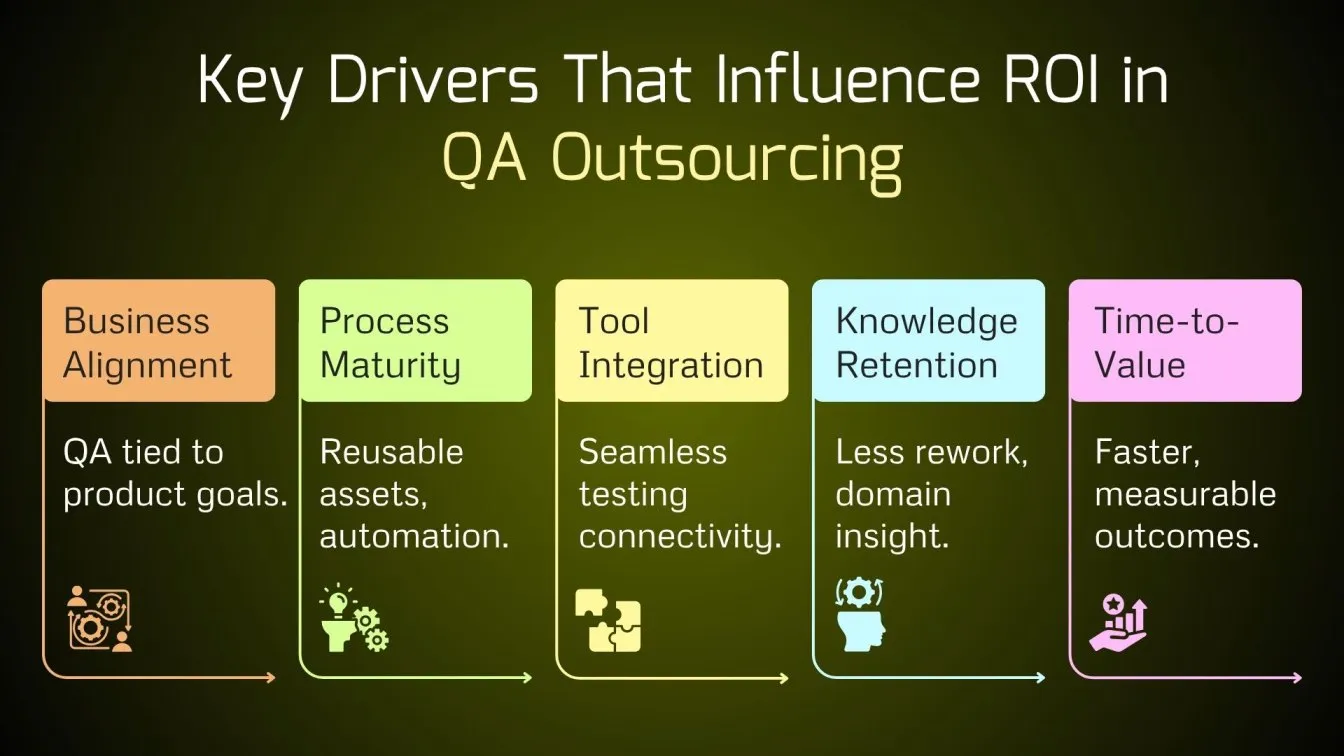
Identifying Total Investment
To accurately evaluate the return on investment (ROI) from QA outsourcing, the first step is to identify the total investment involved. This includes all direct and indirect costs associated with engaging external quality assurance services.
Key components include:
- Vendor Costs: Fixed project fees, retainer charges, or per-hour billing for outsourced software testing services.
- Tooling Expenses: Licensing fees for test automation tools, application security testing software, and code coverage tools.
- Integration & Setup: Time and effort spent on aligning workflows, onboarding processes, and tool configurations to match existing performance testing environments.
- Infrastructure Costs: Costs for setting up additional test infrastructure, including cloud-based platforms or third-party services required to support software delivered by external QA teams.
- Management Overhead: Internal time and resources used in vendor management, performance reviews, reporting, and meetings to align expectations and monitor key performance indicators.
Understanding Value Delivered
Once the investment is identified, the next step in ROI evaluation is to determine the value delivered by the outsourced quality assurance services. This reflects both tangible outcomes like reduced bugs and faster releases, and intangible benefits like improved user trust and team efficiency.
Key value indicators include:
- Improved Test Coverage: Broader and deeper testing across modules, browsers, and devices using automation test tools.
- Defect Reduction: Fewer production bugs and hotfixes due to early issue detection in the QA phase.
- Faster Releases: Accelerated development cycles enabled by continuous testing and automation.
- Higher Product Quality: Better user experience and fewer customer complaints, leading to increased trust.
- Security & Compliance: Safer applications through application security testing software and compliance-focused testing.
Breaking Down QA Outsourcing Costs
Outsourcing software testing is a cost-effective alternative to maintaining large in-house QA teams. Costs vary depending on the engagement model, location, team size, and tools used. Here's what typically impacts your QA outsourcing budget:
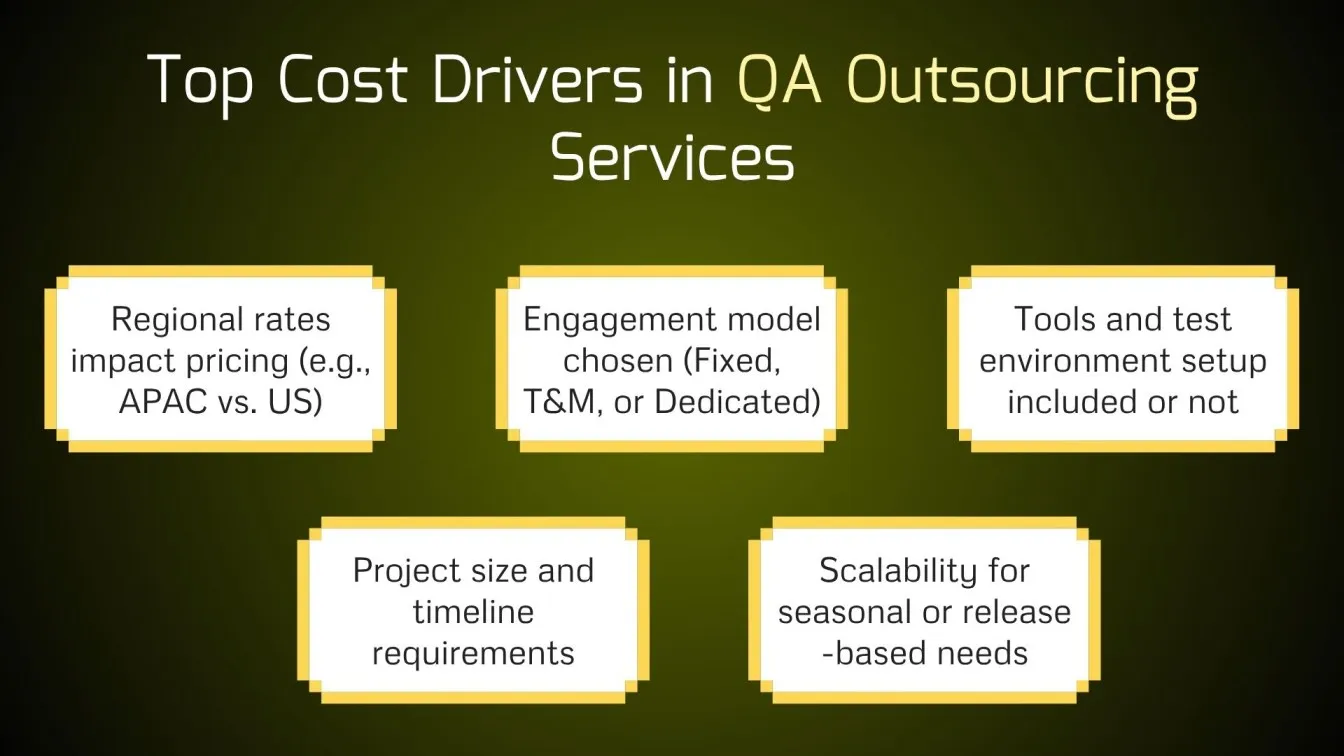
Key Cost Components:
- Hourly Rates: Range from $18–$40/hour depending on location and expertise.
- Engagement Models: Choose from fixed price, time & material, or dedicated team models.
- Tooling & Infrastructure: Many vendors provide built-in tools and test environments, reducing setup costs.
- Project Scope: Larger projects may require more testers and longer timelines, increasing cost.
- Region-Based Pricing: Offshore vendors (e.g., India, Eastern Europe) often provide up to 60–70% savings.
Time and Efficiency Gains
One of the most valuable contributions of QA outsourcing to return on investment (ROI) is the measurable time and efficiency gains across the software development lifecycle.
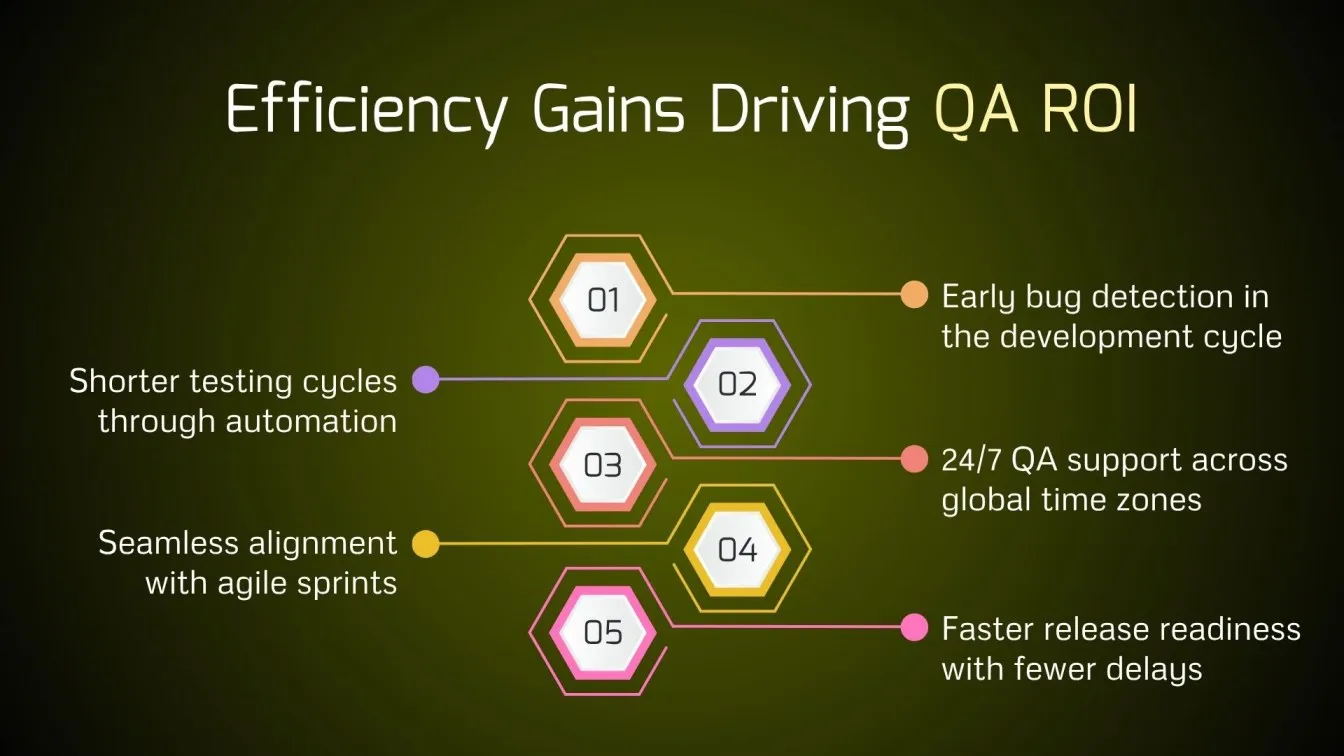
Key efficiency benefits include:
- Faster Testing Cycles: Improving test automation services reduces manual effort and speeds up execution.
- Quick Feedback Loops: Automated regression testing integrated into CI/CD pipelines allows immediate issue detection.
- Reduced Release Delays: Fewer last-minute bugs enable on-time product launches.
- Efficient Resource Allocation: Internal teams can focus on core development while QA partners manage testing scope.
- Improved Productivity: Well-defined processes and round-the-clock testing accelerate delivery timelines.
ROI Calculation Formula and Example
Calculating ROI in QA outsourcing shows how effectively your investment translates into value. By comparing the cost of services like vendors, tools, and infrastructure with benefits such as faster releases, fewer defects, and improved performance, you can measure financial efficiency. This helps in vendor management, cost-benefit analysis, and aligning QA efforts with broader business goals.
- Step 1: Identify total QA outsourcing costs (vendors, tools, setup).
- Step 2: Measure business value delivered (quality gains, faster time-to-market).
- Step 3: Apply the ROI formula to evaluate profitability.
- Step 4: Use results for ongoing ROI analysis and decision-making.
- Step 5: Align outcomes with performance metrics and optimization plans.

This means the company earned 1.5 times its investment, showing that QA outsourcing was highly profitable and impactful for the project.
Real-World Scenarios of Successful QA Implementation
Organizations across sectors have achieved measurable results by outsourcing quality assurance services and adopting advanced test automation frameworks. These use cases show how strategic testing methodologies, proper vendor management, and modern tools contribute to faster releases, higher product quality, compliance with security protocols, and improved return on investment (ROI). Through better test coverage, reduced QA overhead, and alignment with market demands, companies have enhanced business functions, minimized response times, and improved overall software delivery.
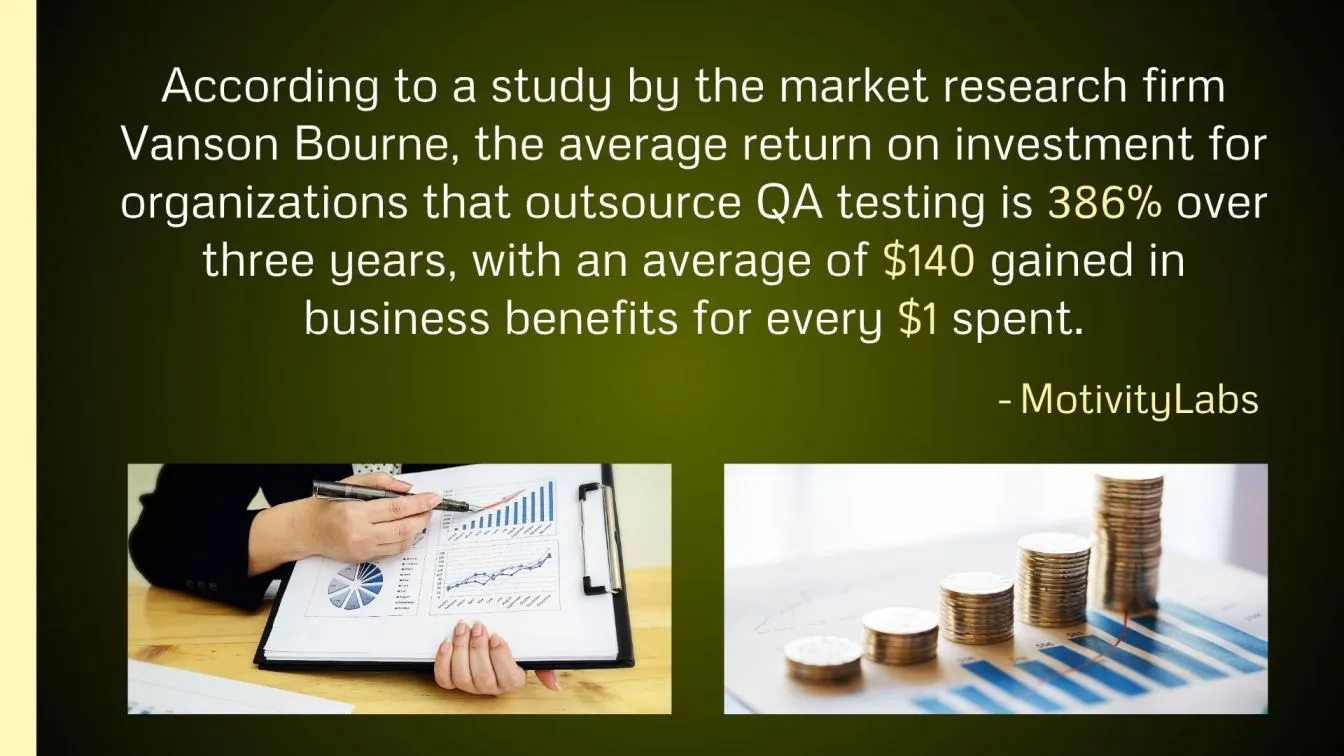
Scalable QA for Rapid Product Releases - E-Commerce Platform
Use Case: Handling high testing volumes during frequent feature rollouts.
A leading e-commerce brand partnered with a third-party testing provider to support product development cycles and seasonal surges. By using test automation frameworks and test management tools, the QA team automated regression tests, expanded test coverage, and reduced reliance on manual testers. The framework allowed real-time feedback across shopping carts, product filters, and payment workflows, improving defect detection and aligning with agile methodologies. Integrated tools like Jenkins and JIRA ensured CI/CD stability, while cloud environments provided scalability during peak events.
- Used By: Online fashion and lifestyle platform
- Technology Stack: Selenium, Jenkins, JIRA, cloud testing environments
- Outcome: 50% faster feature releases, 70% drop in late-cycle bugs, enhanced return on investment
Automated Compliance Testing - HealthTech Platform
Use Case: Meeting healthcare regulations through automation.
A digital healthcare provider outsourced QA to meet strict regulatory and security standards. The partner implemented application security testing software to automate HIPAA compliance workflows, form validations, and encryption checks. Automated tests validated customer data handling, access controls, and secure APIs. Integration of OWASP ZAP and REST Assured helped in simulating threats and ensuring high security assurance. This reduced manual work, ensured faster regulatory approval, and supported scalable business process outsourcing across development teams.
- Used By: Digital healthcare SaaS platform
- Technology Stack: Selenium, Postman, OWASP ZAP, REST Assured
- Outcome: 100% audit pass rate, 40% less manual QA work, stronger rate of return on investment
Cross-Browser Compatibility Testing - Travel Booking App
Use Case: Delivering a consistent user experience across all devices.
To address fragmented UI experiences, a regional travel company outsourced QA to test across browsers and screen sizes. The team used web application testing tools to simulate varied devices, ensuring layout consistency and smooth booking experiences. Through automated testing methodologies, they validated key journeys, like search, filters, and payment, ensuring uniformity across platforms. BrowserStack and Cypress provided real-user simulations, while Percy supported visual regression. This proactive approach helped reduce bounce rates and aligned with user expectations derived from customer feedback.
- Used By: Regional travel service provider
- Technology Stack: BrowserStack, Cypress, GitHub Actions, Percy
- Outcome: 95% UI consistency, higher booking conversions, and increased return on investment (ROI)
Performance Optimization - B2B SaaS Tool
Use Case: Enhancing load performance and backend stability.
A B2B SaaS company outsourced QA to identify performance bottlenecks and optimize backend systems. The QA partner conducted extensive performance testing using JMeter, measuring key performance indicators like response time, memory usage, and throughput. Tools like Grafana and New Relic helped visualize performance metrics, aiding developers in fixing slow API calls and scaling backend capacity. This data-driven cost-benefit analysis supported better infrastructure planning and ensured the system could meet market demands during peak usage.
- Used By: Enterprise collaboration SaaS platform
- Technology Stack: JMeter, Grafana, New Relic, Postgres
- Outcome: 30% faster backend response, better scalability, and improved return on investment analysis
What are the Challenges of QA Outsourcing
While outsourcing quality assurance services can increase efficiency, it also introduces several risks and challenges that need to be addressed carefully:
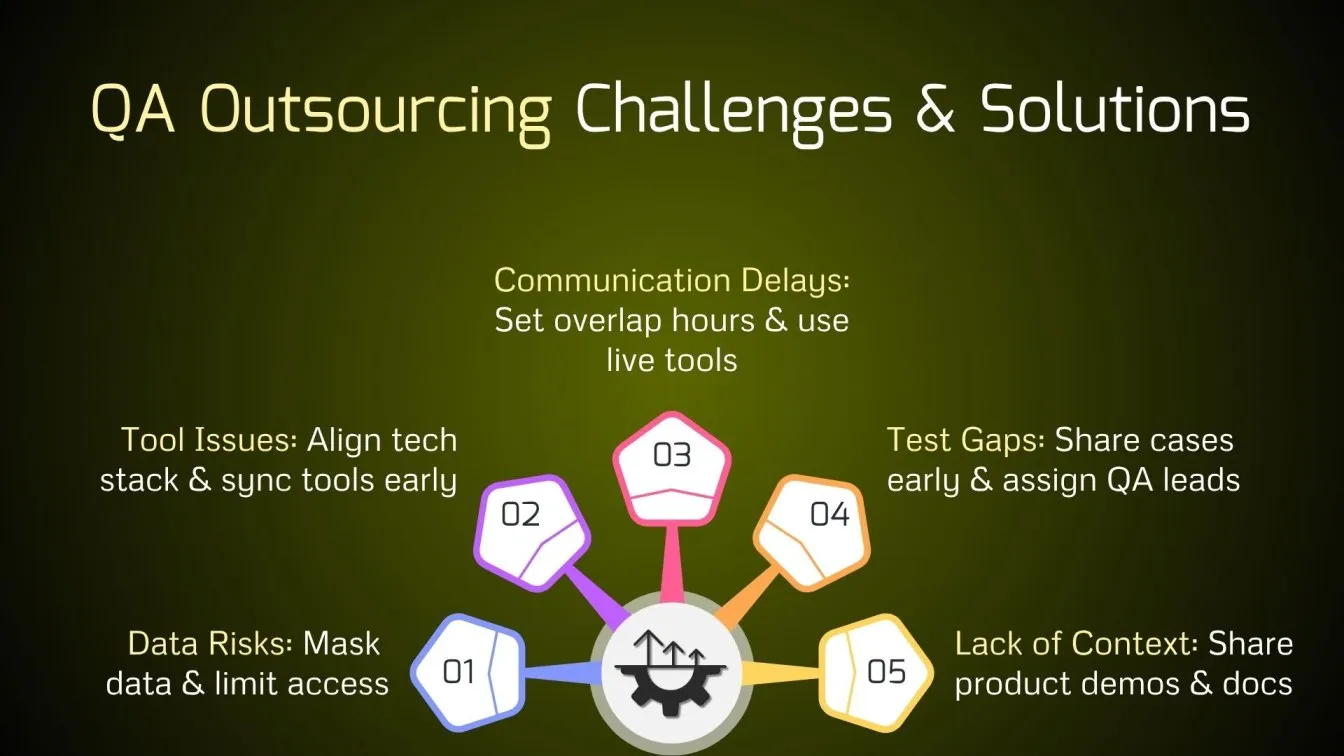
- Lack of Product Context: Third-party QA teams may not fully understand your product’s business logic, user behavior, or technical nuances. This can lead to incomplete test coverage and missed critical scenarios.
- Communication Delays: Time zone differences, unclear documentation, or limited direct access to developers can lead to misalignment, slower feedback cycles, and delayed test execution.
- Data Security Risks: Sharing sensitive data with external vendors can raise concerns around compliance, confidentiality, and integrity, especially in industries where application security testing software is essential.
- Inconsistent Test Coverage: Without tight coordination, external QA teams may overlook key functionalities, resulting in gaps in test coverage or insufficient code coverage during testing.
- Tool Integration Issues: Integrating the outsourced QA team into your existing tools (CI/CD, bug trackers, automation frameworks) can be complex and impact test speed and workflow stability.
How to Maximize ROI with the Right QA Partner
To achieve a strong return on investment (ROI) from QA outsourcing, it's important to select a partner that aligns with your goals, tools, and long-term needs:

- Set Clear Testing Goals
Define measurable outcomes such as faster response times, reduced defect leakage, and higher test automation rates. These serve as your key performance indicators to track QA success. - Choose Skilled Automation Experts
Work with partners proficient in tools like Selenium, Cypress, and JMeter. This ensures they can manage both manual testing and performance testing, contributing to productivity gains and improved testing procedures. - Ensure Workflow Integration
Effective integration with your tools (e.g., Jira, GitHub, Jenkins) supports smooth collaboration, faster test cycles, and more accurate defect tracking, all essential for optimized vendor management. - Monitor Key Metrics
Regularly evaluate performance metrics such as automation ROI, bug fix time, test coverage, and time-to-market. This allows for ongoing cost-benefit analysis and helps identify areas for cost reduction. - Start with a Pilot Project
Begin with a limited scope to validate the partner’s capabilities, test integration with existing tools, and assess early business process outsourcing performance before scaling the engagement.
Conclusion: Maximizing ROI Through QA Outsourcing
Outsourcing software testing empowers businesses to speed up releases, reduce defects, and enhance product quality without stretching internal resources. With skilled QA partners, companies gain access to automation, better coverage, and scalable talent. When aligned with development goals, this approach becomes a strategic driver of efficiency, reliability, and long-term ROI.
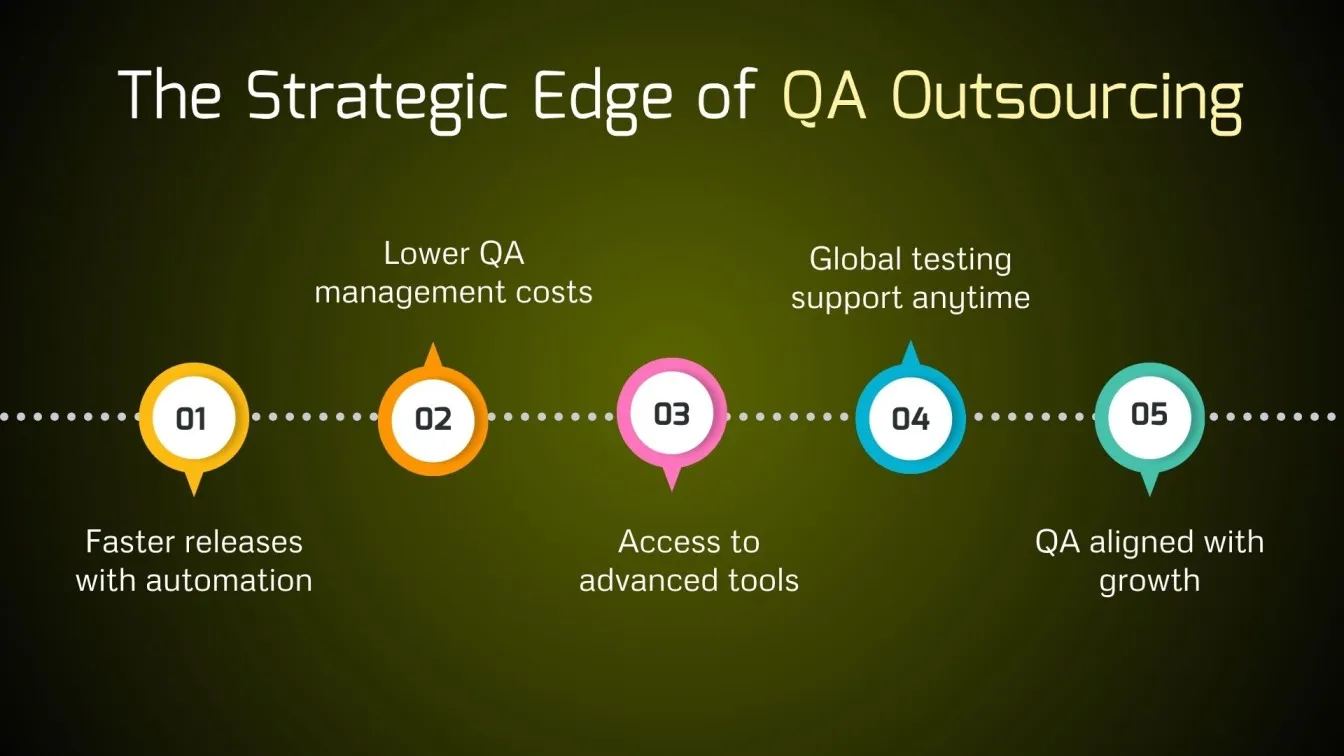
Frugal Testing, a leading SaaS application testing company, is renowned for its specialized AI-driven test automation services tailored to meet the evolving needs of modern businesses. Among the comprehensive services offered by Frugal Testing are advanced Fintech Software Testing Services, designed to ensure security, performance, and compliance in financial applications. The company also provides cloud-based test automation services, enabling scalable, efficient, and cost-effective testing solutions.
People Also Ask
👉 What security measures should be in place when outsourcing QA?
Use NDAs, role-based access, encrypted environments, and data masking, and ensure compliance with regulations to protect sensitive information throughout the QA outsourcing process.
👉 How do outsourced QA teams integrate with CI/CD pipelines?
They connect via Jenkins, GitHub Actions, or similar tools to automate testing within the build and deployment stages, ensuring continuous validation, faster feedback, and smoother integration workflows.
👉 What KPIs should be tracked when working with an outsourced QA team?
Track key metrics such as defect detection rate, bug resolution time, test coverage, automation percentage, and defect leakage to monitor QA performance and delivery quality.
👉 What role do version control systems play in outsourced QA?
Version control tools help manage test scripts, support real-time collaboration, and ensure QA changes are versioned and aligned with development code updates effectively.
👉 How is defect density calculated?
Defect Density is calculated by dividing total defects by code size (KLOC). It helps evaluate code quality by showing how many bugs exist per 1,000 lines.
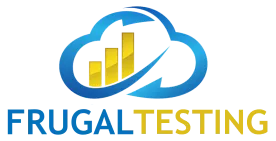


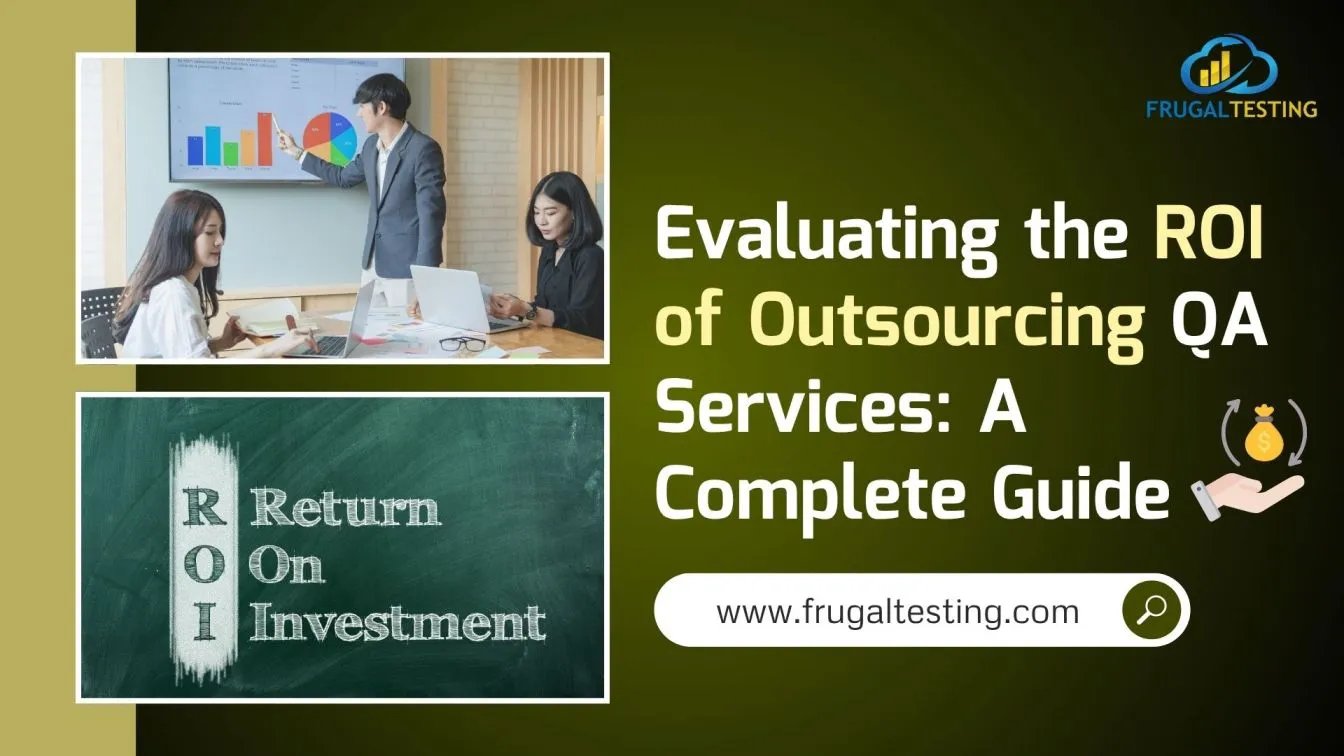
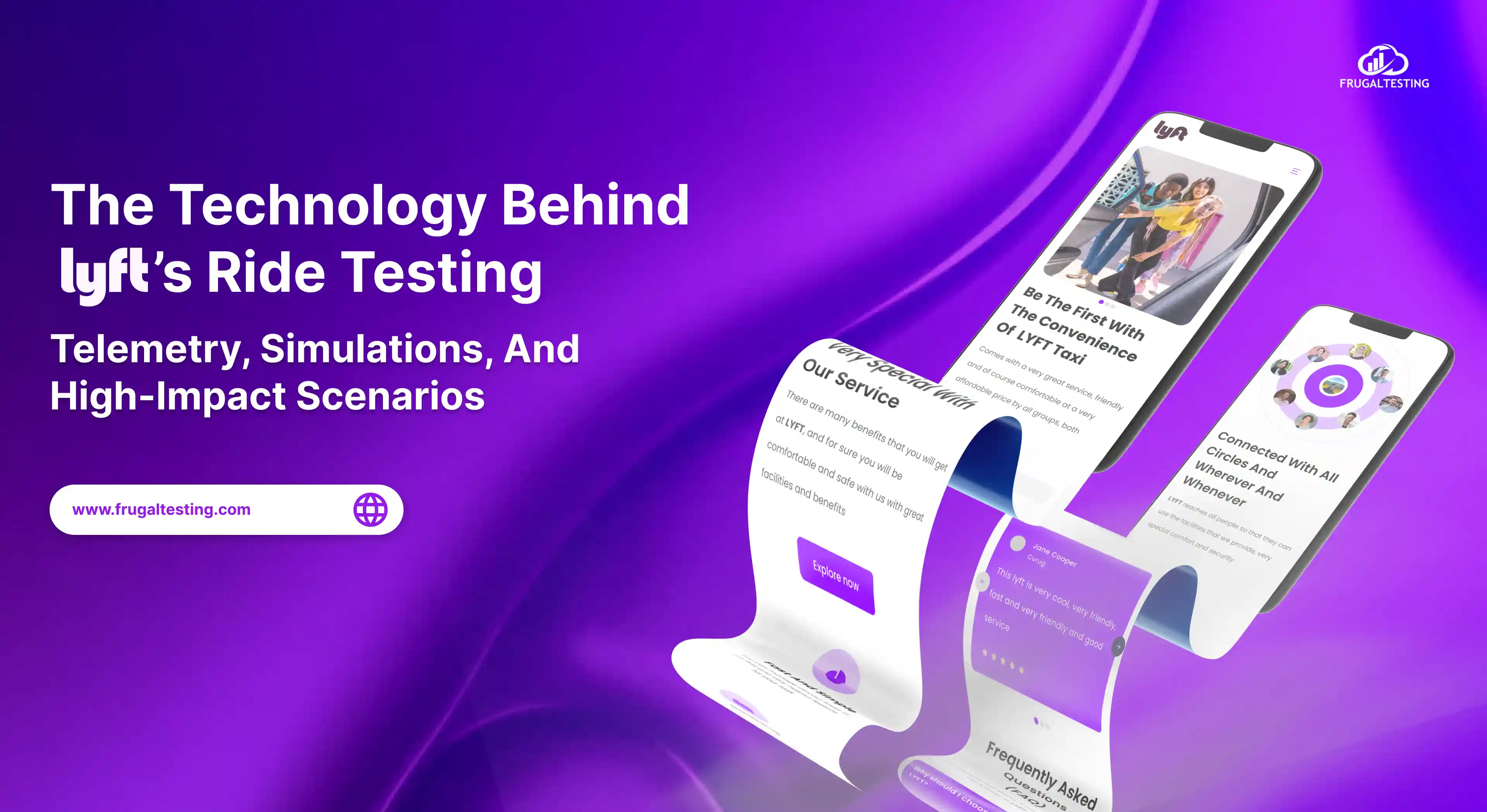
%201.webp)

